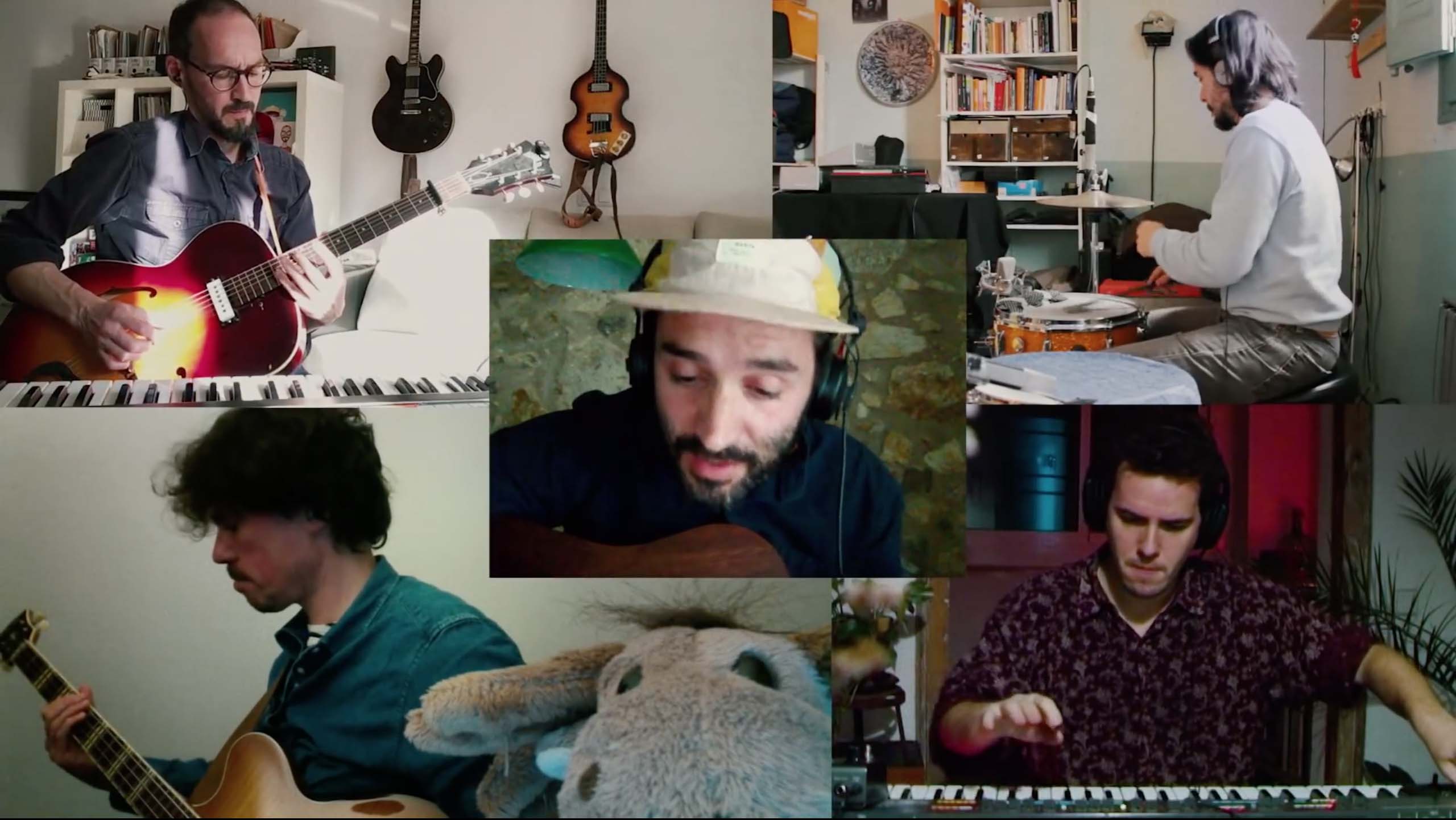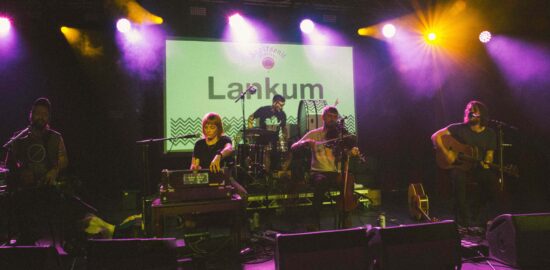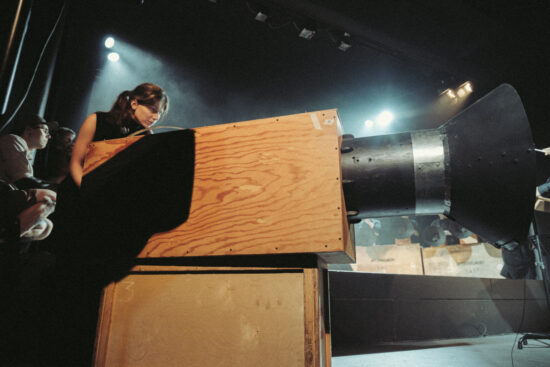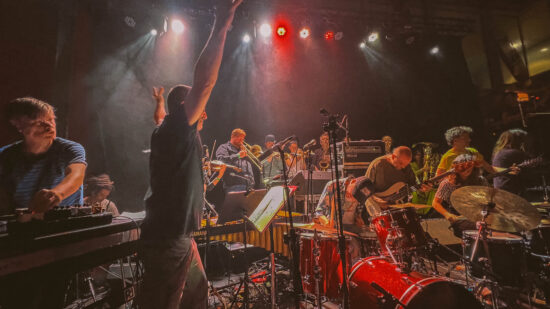The Spanish indie scene came together with lightning speed to organise the first DIY festival online in Europe. As a result, we got the best showcase of music from Spain in years.
Aleksandra Szkudłapska
Collaboration: Iván Jávega López
Cuarentena Fest – a 12-day “festival of music in streaming for difficult times” – is a grassroots initiative put together by a group of promoters, cultural activists and small labels. As a reaction to cancelled festivals and closed clubs, the Spanish indie scene came together with lightning speed, moving the concerts online – and the scale of the event (the line-up spanned around 50 artists!) sparked attention in other corners of the world. You can find out more about the how and why from my show for Radio Kapitał, but as has been stressed by the organisers, they basically set out to support artists at this precarious time. As a side effect, though, we all got a great showcase of the current scene.
Cuarentena Fest was like an intensive course in Spanish indie pop – from singer-songwriters equipped only with guitars to exciting electronic projects, from traditional song forms to more blurry, vibrating compositions. Some of the artists invited us directly to their own homes (bedrooms, living rooms, impressive home studios) – others added computer graphics to the streamings (and appeared, for instance, surrounded by animated volcanoes). The concerts were intimate, some were more amateur, some more professional, there even were bands who managed to play a gig in spite of the musicians being physically in different locations.
Contrary to the majority of traditional festivals, we may view these concerts again – on the Cuarentena Fest YouTube channel, you can find a playlist with almost 50 recordings. To encourage you to explore them on your own, here’s my top 9.
Without doubt, my greatest discovery of the festival is Caliza. Elisa Pérez, once the drummer of Rusos Blancos, has been going it alone for the last couple of years – creating her brand of multi-layered, intriguing, melodious electronic pop. Her songs sounded amazing live, entirely captivating from the very first minute of the set.Caliza perfectly meandered between delicately danceable motifs and melancholy. She presented a large selection of tracks from her second album, Mar de cristal, but also both songs from her last EP, Planes para Nacho / Saber. To me, her cover of XTC’s “Plans for Nigel” (Spain has an amazing tradition of recording covers with translated lyrics) is a thing of absolute beauty.
Another very interesting girl with synthesizers is Cabiria. Music-wise, she reminded me a bit of Caliza, but her compositions are more ethereal and oneiric. At first sight, the artist also seems much more introverted and shy; during the concert, her voice often faded to little more than a whisper – especially when she played her version of Caetano Veloso’s “Corazon vagabundo”, profusely apologising for the imperfect guitar sound. Which was completely unnecessary, because everything sounded great. Favourite track: “Fantasma”.
In turn, Evripidis and His Tragedies played one of the happiest sets of the entire festival. Evripidis Sabatis is a Greek guy who’s been living in Barcelona for ages, and whose music reminds me of early Belle and Sebastian, Jens Lekman and the sunnier side of indiepop in general. At times, his concert looked like a music video; he was accompanied by his partner, Marc Ribera (who plays in Doble Pletina) – responsible for the camera work, backing vocals, finger-snapping and even playing the musical saw. This concert is bound to brighten up your day.
My most emotional moment of the festival was delivered by El Petit de Cal Eril. The “metaphysical pop” played by the Catalans has accompanied me for years, each time transporting me to a nicer place than that from which I press play. Their concert at the Cuarentena Fest was a truly out-of-this-world experience, because the five musicians recorded it… from five different places. As the singer, Joan Pons, explained at the beginning of the show, he first recorded his own track and sent it to the others – and they played their parts on top of it. Before the gig, they didn’t have a chance to check how everything would sound together. See (and hear) for yourselves.
The concert of Lucas Bolaño, otherwise known as Estrella Fugaz, evoked an entirely different atmosphere. Here I really had an impression of having gatecrashed a house gig for friends. When Lucas spoke too long between songs, he played himself a clip of his friend’s voice (“stop talking about your life!”), he directly addressed the audience, and even his lyrics sometimes alluded to songs by fellow bands. But my favourite track is “Wow!”, inspired by the strange signal registered in 1977 by an American radio telescope, which, for a short while, suggested we were not alone in the universe (but sadly proved to have come from a comet).
Another lovely, intimate set was played by Jose Ignacio Martorell. Simple songs with brilliant lyrics – for example about the weather (“talking to you about meteorology is more interesting than scientology”), about second chances (with the beautiful two-liner “life gives you work, work robs you of life”) and yes, also about love. But even if you don’t speak Spanish, you can easily join in the backing vocals, singing “weeweewee” or “fafafa” (it works, trust me).
Apartamentos Acapulco played a set you could follow with your eyes closed in order to detach from the world. In their two-person line-up, they presented amazing shoegaze material, which (yes, I’m dreaming here) would sound perfect at the Spacefest festival in Gdańsk. Maybe one day, eh?
Another very interesting concert was that of Juan Carlos Roldán (he was the one playing against a volcano background, and he even turned his missing bandmates into GIF animations). Roldán mostly played songs from his last record, released at the beginning of March. Intriguing vocals, personal songs with interesting beats, sometimes verging on bossa nova, at other times drifting into dense synthesiser layers. The last song, about how we should try to be good for ourselves, stole my heart. Besides, I’ve always been impressed by people who can whistle.
However, the festival’s finale belonged to Javier Carrasco, i.e. Betacam. The artist invited us to his place to a crazy party fuelled by three synthesisers (one YouTube comment suggested he should have added a fourth one behind him), accompanied by his girlfriend who danced and sang backing vocals (“Chacal”!!!). Betacam is a truly charismatic musician – his stage presence reminded me of Jarvis Cocker or Erlend Øye. He pulled off a real show in his living room, playing a different set of pre-recorded applause after each track. Most of the songs were based on electronics with a heavy 1980s touch, but there was also the guitar, and at the end, he played a cover… of Eros Ramazzotti’s “Se bastasse una canzone”, which sounded really touching (after all, it’s a “song for all those who feel abandoned”). Betacam also thanked all(!) bands playing at the festival, and improvised lyrics about how you can support all the participating musicians.
I think that’s an apt summary of the entire festival – even though the artists were alone streaming their sets from their homes, you could constantly feel the connection there. Between concerts, they exchanged advice on how to best technically organise the streamings, they regularly appeared on the YouTube chat to joke, show they’re listening to each other’s concerts and offer support.
The festival captured the scene at a very good moment. After the 1990s, when a lot of Spanish indie bands were almost automatically copying British and/or American pop, the situation began to change. More and more artists started creating in their own language (so the song lyrics became more original and honest), and the UK and US lost their monopoly on musical inspirations – for instance, to Latin America. That’s what, to me, makes Spain such an interesting point on the global music map.
Yet Cuarentena Fest is more than “just” a presentation of the live, pulsating and honest local indie scene – or an opportunity to discover bands we wouldn’t have normally been able to see outside Spain. For me, the festival above all embodied the hope and strength that may come from self-organisation. I’m pretty sure I’m not the only person for whom Cuarentena Fest has made it easier to survive these strange days of insecurity and isolation. Here lies the unobtrusive power of indiepop – this is not the type of music that will lead you to the barricades, but it does something else: it makes you aware that you are never, ever alone.
The only slight downside is knowing the crowdfunding effort hasn’t yielded spectacular effects – the amount of ca. EUR 3,000 published on the organisers’ Twitter translates to around EUR 60 per artist, offering little more than symbolic support. The question is whether the PayPal link could have been highlighted more, or whether it simply means that a large part of the audience have also found themselves in a precarious situation.
Following the warm response from fans and musicians alike, Cuarentena Fest decided to keep playing. Starting Monday, the festival is moving to South America, specifically Argentina, Chile, Colombia, Uruguay and Mexico (you can chip in to the subsequent editions by clicking the “Donar” button). I only know three bands from the new line-up, but speaking from experience of the last days, my single piece of advice is: allow yourself to be surprised. Cuarentena Fest proves that the best things can sometimes happen in the least expected circumstances.




